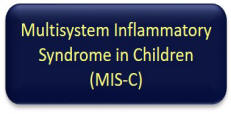 Kawasaki Disease
What is Kawasaki Disease?
Kawasaki Disease
What is Kawasaki Disease?
Kawasaki disease (KD) is an acute febrile illness of unknown etiology that primarily
affects children younger than 5 years of age. KD was first described in Japan by Tomisaku Kawasaki in 1967, and the first cases outside of Japan were reported in
Hawaii in 1976. In Los Angeles County, surveillance for Kawasaki
Syndrome ended in 2011.
What are the signs and symptoms of KD?
KD is characterized by:
|
|
|
|
- swelling of the
hands and feet
|
- irritation and
redness of the whites of
the eyes
|
- swollen lymph glands
in the neck
|
- irritation and
inflammation of the
mouth, lips, and throat
|
What are serious complications of KD?
Serious complications of KD include coronary artery dilatations and
aneurysms. KD is a leading cause of acquired heart
disease in the United States.
How is KD treated?
The standard treatment with intravenous immunoglobulin
and aspirin substantially decreases the development of these coronary artery
abnormalities.
Updated 5.13.2020

